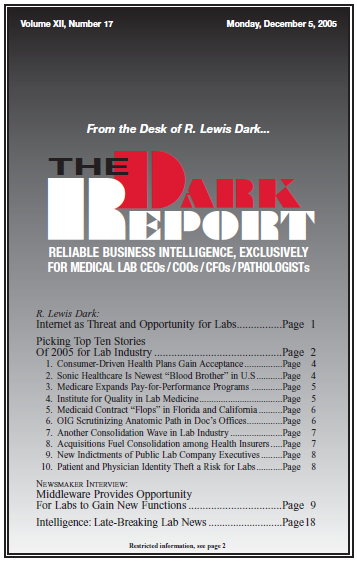“Even as more laboratories begin to use middleware, the number of functions and uses for middleware continues to increase —Gregory R Vail, CEO, Data Innovations, Inc. CEO SUMMARY: Middleware is attracting attention throughout the laboratory industry. It describes the software applications that bridge instruments and the LIS, or sit on top of the LIS to …
Middleware Provides Opportunity For Labs to Gain New Functions Read More »
To access this post, you must purchase The Dark Report.


